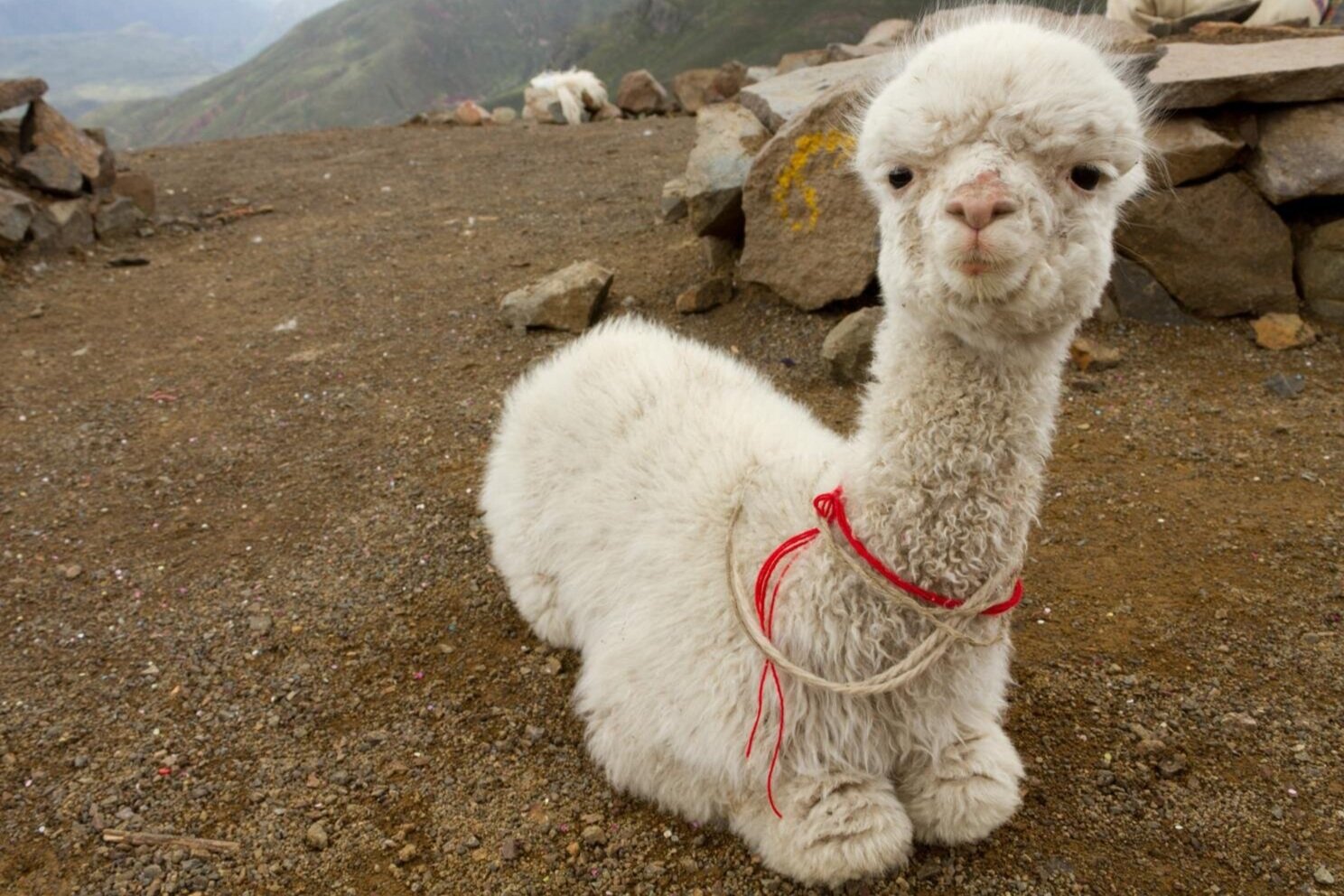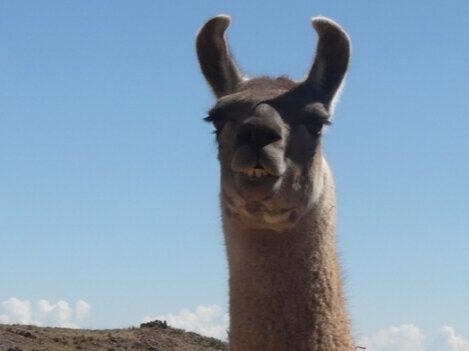learn about south america’s ‘Camels’
Unique to the continent, the four South American camelids (in the same family as Old World camels) are found in greater numbers in the Peruvian highlands than anywhere else in the Andes.
Two species, the familiar llama and alpaca, are domesticated, while the vicuña and guanaco are essentially wild; but the order Camelidae share a number of traits:
Herbivores.
Two-toed feet with soft pads that move for greater grip.
Walk by moving both legs on the same side simultaneously.
A three-chambered stomach … unlike other ruminants such as cattle, pigs and sheep, which have four-chambered stomachs.
Upper lips split in two: each part is separately mobile.
Spit when they get angry … but they do not often get angry at humans!
Red blood cells oval in shape - not found in other mammals.
Llama pulling a trap in Sibayo, Arequipa.
The llama (Lama glama) was domesticated over 6,000 years ago in the Lake Titicaca region.
Until the arrival of the Spaniards with their horses and cattle, llamas, at 114 - 182 kg (250 - 400 lbs) and up to 6 feet tall (1.83 m) were the largest domestic animal on the continent.
Their main use was for the transportation of goods; they are still used as baggage animals today and carry as much as 22.5 kg (50 lbs).
To the Incas’ amazement, early Europeans attempted to ride these diminutive beasts of burden. In disgust at being so overladen, llamas were known to twist their necks and spit a ball of regurgitated stomach contents at their thoughtless riders. Thus has arisen the popular myth that llamas spit at people; in fact they are more likely to discharge at rival llamas during mating periods.
Llamas had several other significant uses to the native people. Their coarse fur was used for ropes or rough yarn, dried pellets (dung) was used for fires, and their tough meat was regularly eaten.
An indication of their importance is that they were sacrificed to Inti, the Inca sun god, and to other gods in pre-Inca cultures.
Baby alpaca in Chivay, Colca Canyon.
Alpacas (Lama pacos) were domesticated soon after the llama, but for an entirely different purpose – their fine wool. Softer than most sheep wool, alpaca fleece is a sought-after product the world over, and alpaca farms have sprung up in North America, Europe and Australia.
The southern Peruvian highlands are home to about 80% of the world’s estimated 4 million alpacas, and they form a major part of the economy of highland campesinos (peasants).
Alpaca meat, high in protein, low in fat and cholesterol, was formerly eaten only by poor campesinos. It has now earned a place in the recently-fashionable novoandina (new Andean) cuisine.
Vicuñas at a ceremonial round-up (chaccu).
Peru’s smallest camelid, the delicate and skittish vicuña (Vicugna vicugna), has the finest wool in the world, but becomes tense and agitated in captivity.
With its golden coat and white belly, it is arguably the prettiest of the four species.
Its wool is sheared during chaccus (ceremonial roundups) in late May or June, after which the animals are released back into the wild.
In Inca times, only nobles were allowed to wear the luxurious wool.
After the Conquest, numbers dwindled through poaching. By the mid 20th-Century, the vicuña was in danger of extinction, so conservation projects were set up in reserves such as Pampas Galeras in the highlands above Nazca, or Salinas y Aguada Blanca above Arequipa.
By 1995, numbers had recovered sufficiently that shearing was again permitted, and the wool became an important income earner.
Now, there are over 100,000 vicuñas in Peru.
Guanaco close-up near Ayacucho.
The guanaco (Lama guanicoe) is the scarcest of the camelids in Peru, with the population estimated at around 3,500 individuals.
Its wool is not fine enough to attempt to catch and shear it. The meat is edible, though, and hunting has caused big declines in the Peruvian population.
The guanaco is extinct in Ecuador and Colombia, but there are robust populations in Argentina and Chile.
Where to see Camelids with PeruNorth:
Any visit to Peru’s Andean region is sure to involve meetings with llamas and alpacas, with many archaeological sites having a resident camelid!
If you want to spend quality time with llamas, our Qhapaq Ñan trek uses them to carry the camping equipment.
Vicuñas are less common, but you are sure to see some on the way to Colca Canyon from Arequipa. You may also see guanacos on this route.
Further north, Chaparri Ecological Reserve has a variety of camelids on display, alongside the iconic Spectacled Bears.





